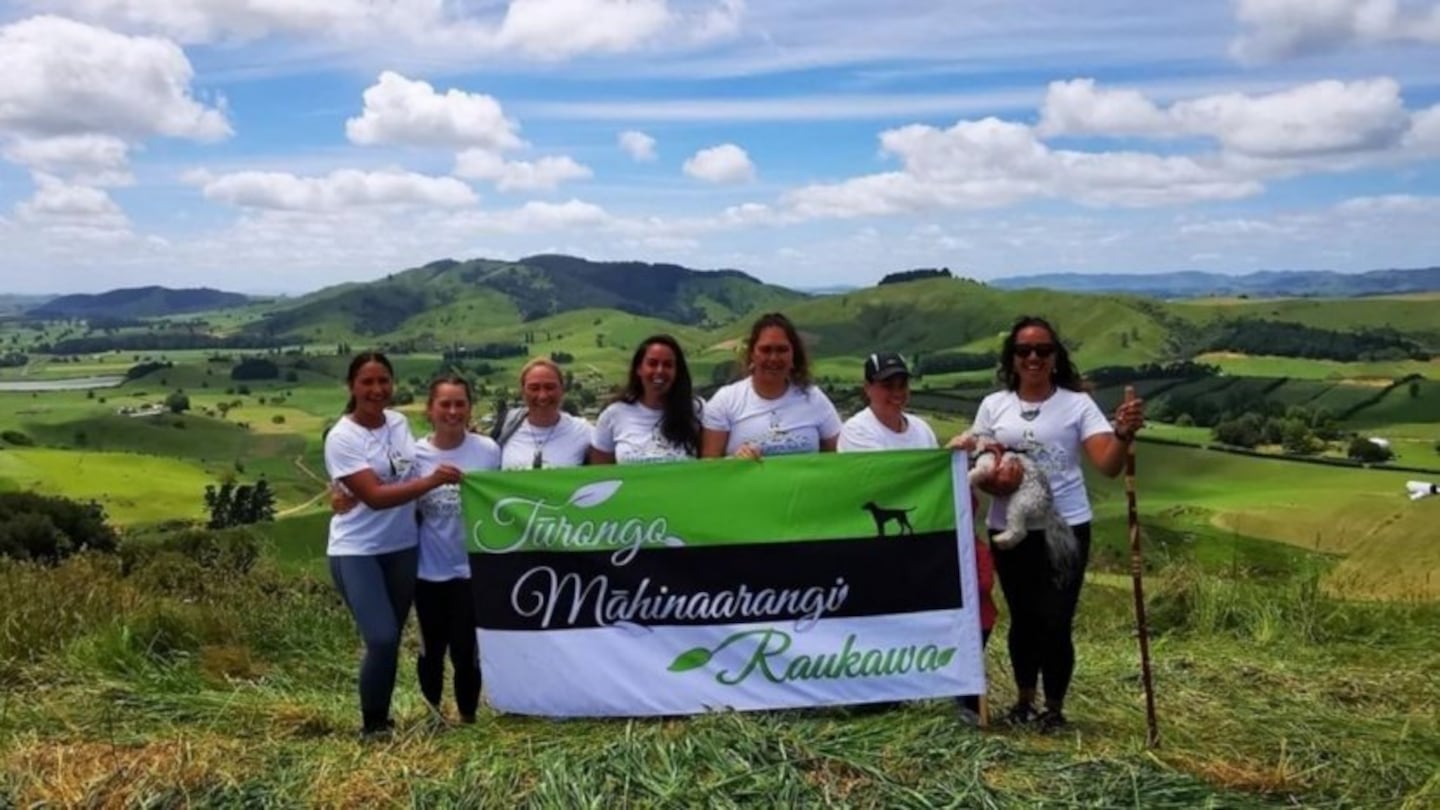Seven Raukawa wāhine have reached their final destination after embarking on a three-week hīkoi across the North Island to retrace the journey of their ancestor Māhinaarangi.
Their arrival at Rangiātea Pā site, on the banks of the Mangaoronga river just out of Otorohanga on Sunday marked the end of an impressive 372km journey which stared from Te Hauke region in Hastings, through to Wairoa, Waikaremoana, and across the Mamaku and Kaimai Ranges, where the wāhine stayed at marae along the way.
Dr Naomi Simmonds, a senior lecturer and researcher at Te Whare Wānanga o Awanuiārangi, who led the hīkoi and the Marsden-funded research – Taku Ara Rā: Ko Māhinaarangi – says it was an incredibly humbling experience for all involved.
“Starting this journey, as a Raukawa wāhine, I wanted to get a deeper sense of who our ancestress Māhinaarangi really was and the diverse lands and rivers she would have travelled through,” Dr Simmonds says.
Kua tutuki! Rangiātea. The Tira were joined by lots of whānau in the last part of this most magical journey, which...
Posted by Taku Ara Rā, Ko Māhinaarangi: Walking in her footsteps 2020 on Saturday, December 5, 2020
Māhinaarangi of Ngāti Kahungunu is renowned for having travelled, while heavily pregnant, more than 500 kilometres from her people’s lands in Kahungunu to those of her husband, Tūrongo, at Rangiātea. On the way, she gave birth to their son, Raukawa, from whom all the seven wāhine descend.
“For years, I’d researched the journey of Māhinaarangi as part of my PhD research, and the one thing that was missing was the actually physical experience of the haerenga itself,” Dr Simmonds says.
“It was an incredible privilege to follow, even if not in its exact form, the path that Māhinaarangi likely took to Rangiātea, and to have six strong Raukawa wāhine join me in this mission.”
The six other Raukawa women who joined Dr Simmonds on the hīkoi were Ngahuia Kopa, Lisa Begbie, and her daughters Tyra Begbie and Klee Begbie, Arahia Moeke and Kyea Watene-Hakaraia.
“We formed incredibly strong bonds during the past three weeks, in some challenging terrain and conditions. Walking approximately 25km a day, there was definitely some sweat and tears but we wouldn’t change anything,” Dr Simmonds says.
“We achieved what we set out to do, including reconnecting with our tribal stories, ancient knowledge, lands, lakes and rivers. In doing so, we were able to really soak in what it meant to be Raukawa wāhine in contemporary Aotearoa, and our unique identity and history.”
E mihi ana ki a Kīngi Tuheitia, me tōna whare, i tae mai ki te whakanui i te kaupapa, waihoki, he mihi ki ngā wāhine o...
Posted by Taku Ara Rā, Ko Māhinaarangi: Walking in her footsteps 2020 on Sunday, December 6, 2020
Dr Simmonds hopes this journey is one other descendants of Māhinaarangi can one day get to experience for themselves.
“We’re hoping this experience will form the basis for a biennial hīkoi event that more of the descendants of Māhinaarangi can participate in, as well as contributing to various research publications in the coming year.”



